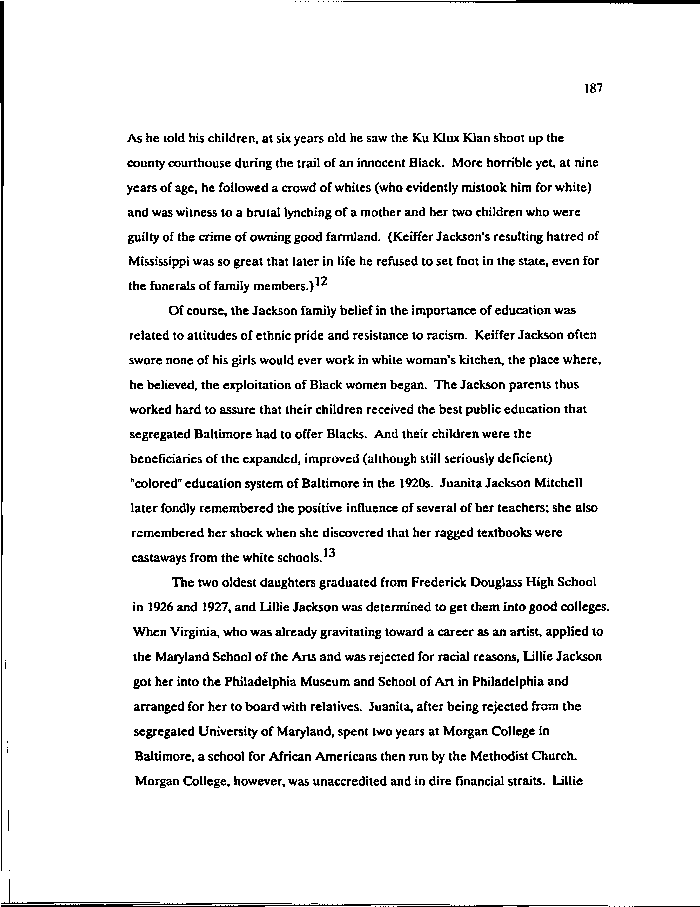|
187
As he told his children, at six years old he saw the Ku Klux Klan shoot up the
county courthouse during the trail of an innocent Black. More horrible yet, at nine
years of age, he followed a crowd of whites (who evidently mistook him for white)
and was witness to a brutal lynching of a mother and her two children who were
guilty of the crime of owning good farmland. (Keiffer Jackson's resulting hatred of
Mississippi was so great that later in life he refused to set foot in the state, even for
T7
the funerals of family members.)*"6
Of course, the Jackson family belief in the importance of education was
related to attitudes of ethnic pride and resistance to racism. Keiffer Jackson often
swore none of his girls would ever work in white woman's kitchen, the place where,
he believed, the exploitation of Black women began. The Jackson parents thus
worked hard to assure that their children received the best public education that
segregated Baltimore had to offer Blacks. And their children were the
beneficiaries of the expanded, improved (although still seriously deficient)
"colored" education system of Baltimore in the 1920s. Juanita Jackson Mitchell
later fondly remembered the positive influence of several of her teachers; she also
remembered her shock when she discovered that her ragged textbooks were
castaways from the white schools.
The two oldest daughters graduated from Frederick Douglass High School
in 1926 and 1927, and LJllie Jackson was determined to get them into good colleges.
When Virginia, who was already gravitating toward a career as an artist, applied to
the Maryland School of the Arts and was rejected for racial reasons, LJllie Jackson
got her into the Philadelphia Museum and School of An in Philadelphia and
arranged for her to board with relatives. Juanita, after being rejected from the
segregated University of Maryland, spent two years at Morgan College in
Baltimore, a school for African Americans then run by the Methodist Church.
Morgan College, however, was unaccredited and in dire financial straits. LJllie
|

